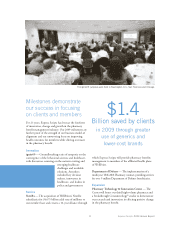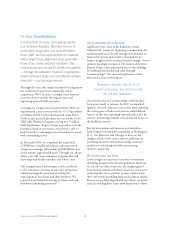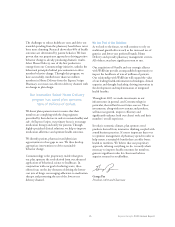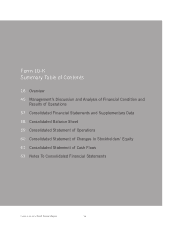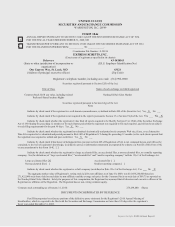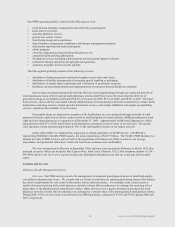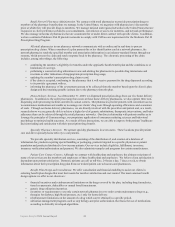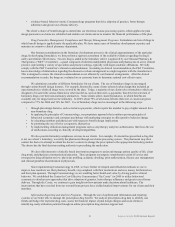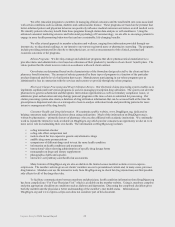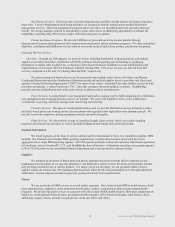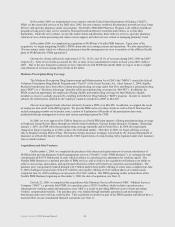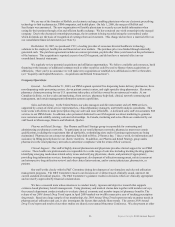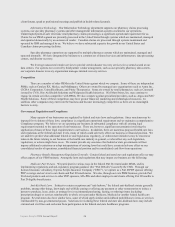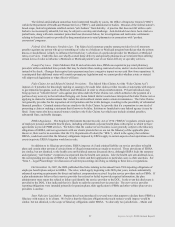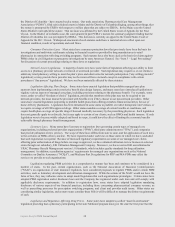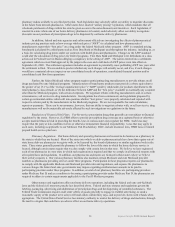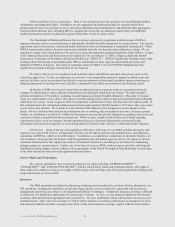Express Scripts 2009 Annual Report Download - page 22
Download and view the complete annual report
Please find page 22 of the 2009 Express Scripts annual report below. You can navigate through the pages in the report by either clicking on the pages listed below, or by using the keyword search tool below to find specific information within the annual report.
Express Scripts 2009 Annual Report 20
Retail Network Pharmacy Administration. We contract with retail pharmacies to provide prescription drugs to
members of the pharmacy benefit plans we manage. In the United States, we negotiate with pharmacies to discount the
price at which they will provide drugs to members. We manage national and regional networks in the United States that are
responsive to client preferences related to cost containment, convenience of access for members, and network performance.
We also manage networks of pharmacies that are customized for or under direct contract with specific clients. In addition,
we have contracted Medicare Part D provider networks to comply with CMS access requirements for the Medicare Part D
Prescription Drug Program.
All retail pharmacies in our pharmacy networks communicate with us online and in real-time to process
prescription drug claims. When a member of a plan presents his or her identification card at a network pharmacy, the
network pharmacist sends the specified member and prescription information in an industry-standard format through our
systems, which process the claim and send a response back to the pharmacy. The electronic processing of the claim
includes, among other things, the following:
• confirming the member’s eligibility for benefits under the applicable health benefit plan and the conditions to or
limitations of coverage,
• performing a concurrent drug utilization review and alerting the pharmacist to possible drug interactions and
reactions or other indications of inappropriate prescription drug usage,
• updating the member’s prescription drug claim record,
• if the claim is accepted, confirming to the pharmacy that it will receive payment for the drug dispensed according
to its provider agreement with us,
• informing the pharmacy of the co-payment amount to be collected from the member based upon the client’s plan
design and the remaining payable amount due to the pharmacy from the plan.
Home Delivery Services. As of December 31, 2009, we dispensed prescription drugs from our five home delivery
pharmacies. In addition to the order processing that occurs at these home delivery pharmacies, we also operate three non-
dispensing order processing facilities and eleven contact centers. Our pharmacies provide patients with convenient access
to maintenance medications and enable us to manage our clients’ drug costs through operating efficiencies and economies
of scale. Through our home delivery pharmacies, we are directly involved with the prescriber and patient and, as a result,
research shows we are generally able to achieve a higher level of generic substitutions, therapeutic interventions, and better
adherence than can be achieved through the retail pharmacy networks. Our direct relationship with patients enables us to
leverage the principles of Consumerology, our proprietary application of consumer marketing sciences and behavioral
psychology to optimize health outcomes. As a result of these interactions, we are able to improve both patients’ healthcare
decision-making and satisfaction with their prescription-drug benefit.
Specialty Pharmacy Services. We operate specialty pharmacies in seven states. These locations provide patient
care and direct specialty home delivery to our patients.
We provide specialty distribution services, consisting of the distribution of, and creation of a database of
information for, products requiring special handling or packaging, products targeted to a specific physician or patient
population and products distributed to low-income patients. Our services include eligibility, fulfillment, inventory,
insurance verification/authorization and payment. We also administer sample card programs for certain manufacturers.
Patient Care Contact Centers. Although we contract with health plans and employers, the ultimate recipients of
many of our services are the members and employees of these health plans and employers. We believe client satisfaction is
dependent upon patient satisfaction. Domestic patients can call us toll-free, 24 hours a day, 7 days a week, to obtain
information about their prescription drug plan from our trained patient care advocates and pharmacists.
Benefit Plan Design and Consultation. We offer consultation and financial modeling to assist our clients in
selecting benefit plan designs that meet their needs for member satisfaction and cost control. The most common benefit
design options we offer to our clients are:
• financial incentives and reimbursement limitations on the drugs covered by the plan, including drug formularies,
tiered co-payments, deductibles or annual benefit maximums.
• generic drug utilization incentives.
• incentives or requirements to use only certain network pharmacies or to order certain maintenance drugs (e.g.,
therapies for diabetes, high blood pressure, etc.) only for home delivery.
• reimbursement limitations on the amount of a drug which can be obtained in a specific period.
• utilization management programs such as step therapy and prior authorization, that focus the use of medications
according to clinically developed algorithms.



